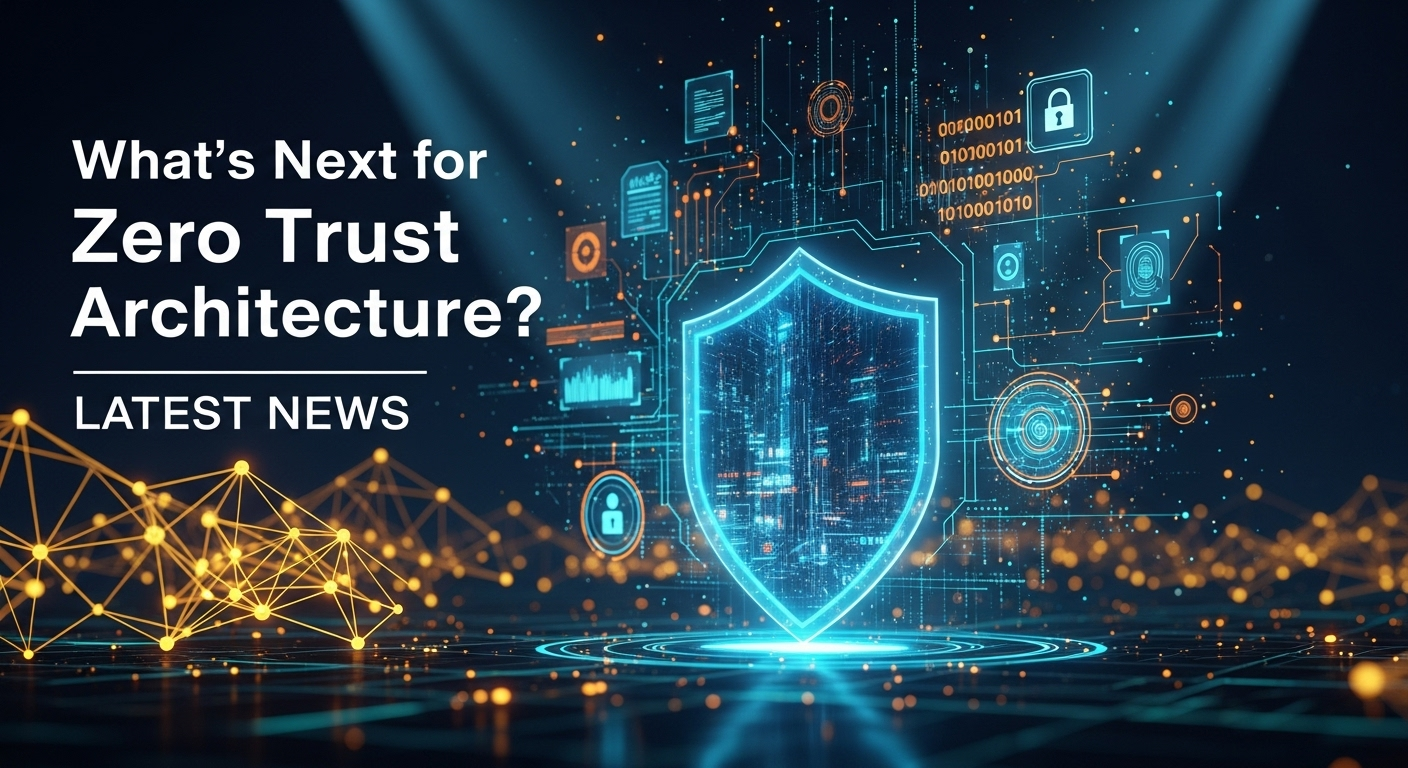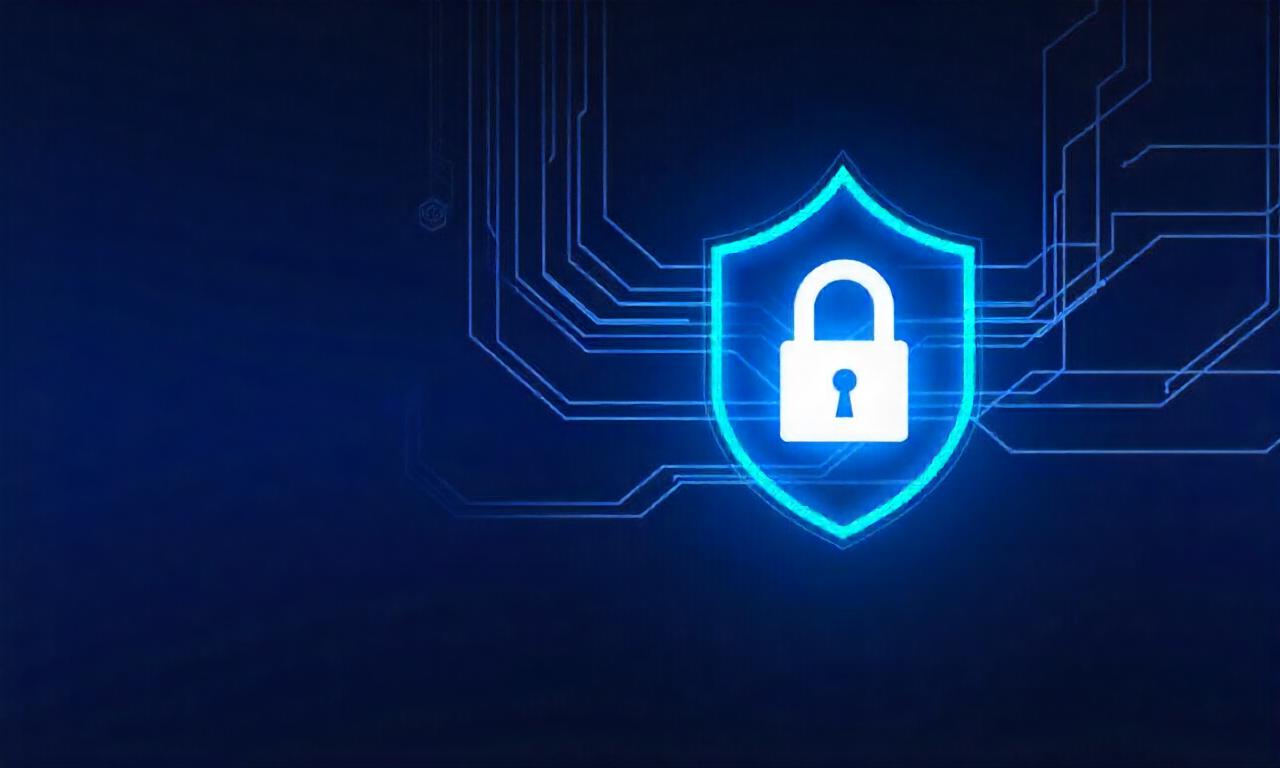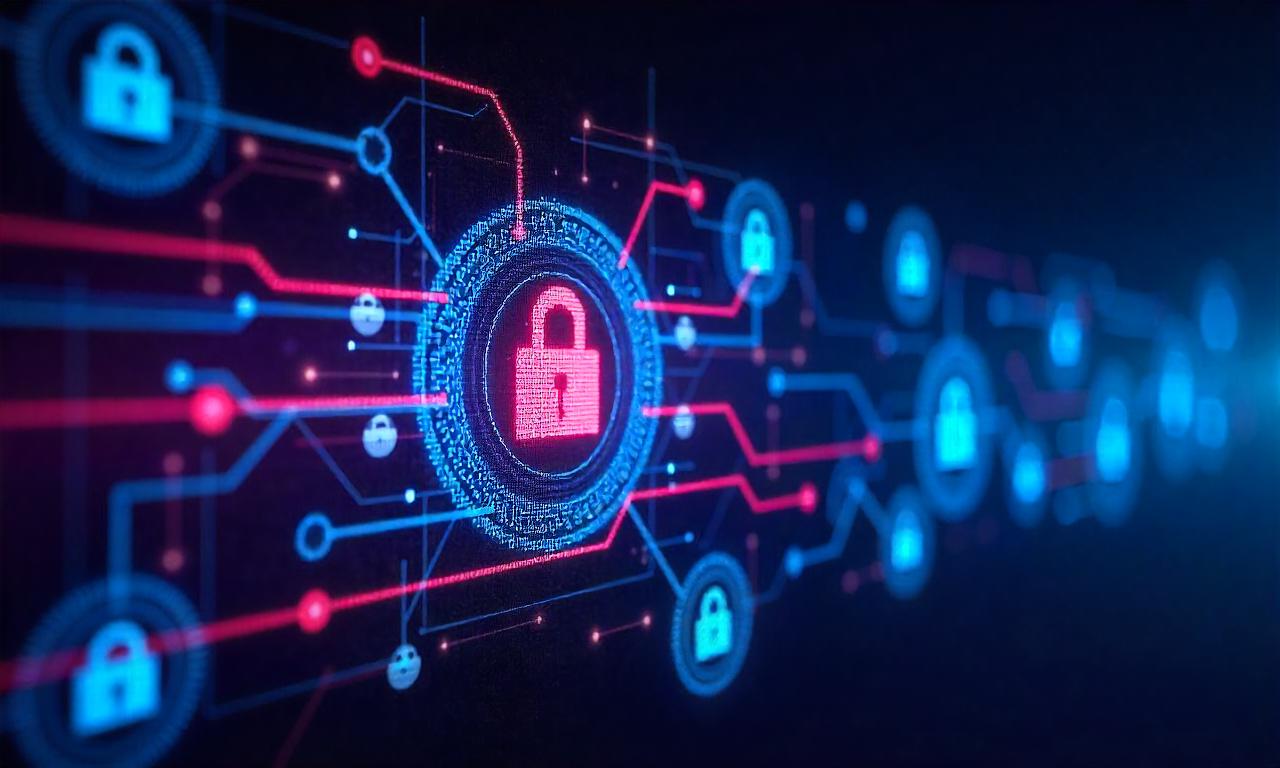In an era where digital perimeters have all but dissolved, the traditional "trust but verify" security model is obsolete. The relentless wave of sophisticated cyberattacks, coupled with the rise of remote work and cloud-native applications, has forced a paradigm shift towards a more resilient framework: Zero Trust. This model, built on the simple yet powerful mantra of "never trust, always verify," is no longer a futuristic concept but a present-day necessity. As organizations navigate this new reality, staying updated on the zero trust architecture latest news is not just an IT concern—it's a core business strategy for survival and growth. This article delves into the latest developments, emerging trends, and the exciting future that lies ahead for Zero Trust.
Table of Contents
ToggleThe Evolving Threat Landscape: Why Zero Trust is No Longer Optional
The digital world has fundamentally changed, and our security models must evolve in lockstep. The old castle-and-moat approach, where a strong perimeter defense was deemed sufficient, is dangerously outdated. Today's "castle" has a thousand doors and windows open to the public internet—cloud services, mobile devices, IoT sensors, and a distributed workforce. Attackers are no longer just trying to breach the outer walls; they are already inside, or they are exploiting the trusted connections that are essential for modern business operations.
This new reality is defined by a more sophisticated and persistent class of threats. Ransomware-as-a-service (RaaS) has democratized cybercrime, allowing less-skilled actors to launch devastating attacks. Supply chain attacks, like the infamous SolarWinds breach, demonstrate how compromising a single trusted vendor can lead to a catastrophic ripple effect across thousands of organizations. Lateral movement—where an attacker gains an initial foothold and then moves freely within the network—is the primary method used to escalate privileges and exfiltrate data.
It is in this context that Zero Trust architecture becomes an imperative. It fundamentally assumes that no user or device, whether inside or outside the network, should be trusted by default. Every single access request must be rigorously authenticated, authorized, and encrypted before being granted. This approach directly counters the modern threat actor's playbook by eliminating the concept of a trusted internal network and drastically limiting the potential for lateral movement. Adopting Zero Trust is no longer a question of if, but how quickly an organization can make the transition.
Core Pillars of Modern Zero Trust: Beyond the Buzzwords
While "never trust, always verify" is a great summary, a robust Zero Trust architecture is built upon several interconnected technical pillars. It’s an integrated strategy, not a single product. The latest advancements are focused on refining and integrating these pillars to create a seamless and dynamic security posture. The focus has decisively shifted from a network-centric view to an identity-centric one, where the user and device identity become the new, dynamic perimeter.
This identity-first approach means that security policies are no longer tied to a static IP address or a physical location. Instead, they are attached to the identity of the user and the context of their access request. This context includes a multitude of signals: the health and compliance of their device, their geographic location, the time of day, and the specific application or data they are trying to access. The goal is to grant the least privileged access necessary for a user to perform their task, for the shortest duration possible.
To achieve this granular and dynamic control, modern Zero Trust strategies are coalescing around three critical and continuously evolving pillars. These are not separate silos but components of a cohesive whole, powered by automation and rich analytics. Understanding how they interact is key to building a successful and future-proof implementation.
Identity as the New Perimeter
The very foundation of Zero Trust is robust Identity and Access Management (IAM). If you cannot be certain who a user is, you cannot make any trusted decisions about what they should be allowed to access. Modern IAM goes far beyond a simple username and password. It requires strong, phishing-resistant Multi-Factor Authentication (MFA) as a baseline for all users—employees, contractors, and partners alike. The latest trend is the move towards passwordless authentication using biometrics or FIDO2 security keys, which significantly reduces the attack surface associated with stolen credentials.
Furthermore, the Principle of Least Privilege (PoLP) is enforced with surgical precision. Instead of granting broad access to entire network segments, Zero Trust Network Access (ZTNA) solutions grant access only to specific applications or resources. This is often described as a "segment of one." If a user's account is compromised, the attacker's access is limited to only the handful of applications that the user was explicitly authorized for, rather than the entire corporate network. This drastically contains the blast radius of any potential breach.
Micro-segmentation and Granular Control
Once a user’s identity is verified, micro-segmentation comes into play. Think of it as creating secure, isolated rooms within your castle rather than just guarding the main gate. Traditionally, internal networks were flat, meaning once an attacker was inside, they could move laterally with ease to discover and compromise high-value assets like domain controllers or databases. Micro-segmentation breaks down the network into small, granular zones—sometimes as small as a single workload or application.
The latest news in this area involves the use of software-defined policies and AI to automate the creation and management of these segments. Instead of manually configuring complex firewall rules and VLANs, security teams can now define policies in plain language, such as "The HR application can only talk to the payroll database, and only HR employees can access it." The underlying network fabric then automatically enforces these rules, regardless of where the workloads are physically located—on-premises, in the cloud, or in a hybrid environment. This dynamic and automated approach is essential for securing modern, ephemeral cloud-native environments.
Continuous Verification and Analytics
The “always verify” part of the mantra is where continuous monitoring and advanced analytics become critical. A user who was trusted a minute ago might not be trustworthy now. Perhaps their device has been infected with malware, or their behavior suddenly deviates from established patterns. A true Zero Trust architecture never grants permanent trust. Access is granted on a per-session, per-request basis, and the context is continuously re-evaluated.
This is powered by a flood of telemetry data from various sources: endpoint detection and response (EDR) agents, identity providers, cloud logs, and network sensors. The latest trend is to feed this data into sophisticated User and Entity Behavior Analytics (UEBA) platforms. These AI-driven systems learn the normal behavior for every user and device and can instantly flag anomalies—such as a user accessing a sensitive resource from an unusual location at 3 AM or a server suddenly trying to communicate with a known malicious IP address. This allows for automated, real-time responses, like forcing re-authentication, limiting access, or isolating a potentially compromised device.
The Convergence of SASE and Zero Trust
One of the most significant pieces of recent zero trust architecture latest news is its deep and accelerating convergence with Secure Access Service Edge, more commonly known as SASE (pronounced "sassy"). SASE is not a separate concept but rather the architectural embodiment of how to deliver Zero Trust capabilities to a distributed and cloud-first world. It represents a fusion of networking and security-as-a-service functions, delivered from a unified, cloud-native platform.
Traditionally, a remote user would connect to the corporate network via a VPN. This meant all their traffic—whether destined for a private app in the data center or a public cloud app like Microsoft 365—had to be "hair-pinned" all the way back to the corporate data center for security inspection. This approach is inefficient, creates a poor user experience, and doesn't align with Zero Trust principles, as a VPN connection often grants broad network-level access. SASE flips this model on its head by moving the security stack to the cloud, closer to where the users and applications are.
SASE combines ZTNA (for private app access) with a suite of other security services like Secure Web Gateway (SWG), Cloud Access Security Broker (CASB), and Firewall-as-a-Service (FWaaS), all delivered through a single global network. When a user wants to access any resource, they connect to the nearest SASE point of presence. Their identity and device posture are verified (Zero Trust), and then a secure, policy-based path is created directly to the requested resource. This eliminates the need for traditional VPNs, improves performance, and ensures consistent security policy enforcement for all users, on any device, anywhere in the world.
| Feature | Traditional VPN | ZTNA (within a SASE Framework) |
|---|---|---|
| Access Model | Network-level access. "Connect to the network." | Application-level access. "Connect to an app." |
| Trust Principle | Implicit trust once connected. | No implicit trust. "Never trust, always verify." |
| Security Focus | Perimeter-based. Secures the network boundary. | Identity-based. Secures access to resources. |
| Visibility | Limited visibility into application traffic. | Full visibility and logging of all access requests. |
| User Experience | Often slow due to traffic backhauling. | Fast and direct access to cloud and private apps. |
| Attack Surface | Exposes the entire internal network. | Significantly reduces the attack surface; apps are "dark" to the internet. |
The Role of AI and Automation in Supercharging Zero Trust
If Zero Trust is the strategy, then Artificial Intelligence (AI) and automation are the engines that will make it run at scale and with unprecedented effectiveness. The sheer volume of signals—logins, device health checks, data flows, application requests—in a modern enterprise is far too vast for human security teams to analyze manually. AI is becoming essential for connecting the dots, identifying subtle patterns of malicious activity, and enabling automated responses in real-time.
The initial role of AI in Zero Trust has been primarily in the analytics domain, as discussed with UEBA. AI models can establish a dynamic baseline of normal activity for every entity in the network and then flag deviations with a high degree of accuracy. This moves organizations from a reactive posture (investigating an alert after a breach) to a more proactive one (investigating an anomaly that could indicate an impending breach).
However, the latest evolution is the integration of Generative AI. This next wave of AI is not just about analyzing data but also about generating content and automating complex workflows. For security teams, this is a game-changer. Generative AI can help a junior analyst investigate a complex alert by summarizing relevant log data in plain English, suggesting next steps, and even drafting incident reports. It can automate the creation of new, context-aware security policies, helping to close gaps faster than ever before.

Predictive Analytics for Proactive Defense
The future of Zero Trust isn’t just about verifying in the moment; it’s about predicting risk. By analyzing vast historical datasets, AI-powered predictive analytics engines can start to identify precursor activities that often lead to a breach. For example, an AI might learn that a specific combination of a new piece of software being installed on a finance user’s laptop, followed by an unusual access request to a cloud storage bucket, has a high probability of preceding a data exfiltration attempt.
With this predictive insight, the Zero Trust system can an take proactive measures automatically. It could increase the risk score for that user, requiring them to go through a step-up authentication challenge before their next access request. It could temporarily block access to sensitive data repositories until a security analyst can review the activity. This moves security from detection and response to prediction and prevention, which is the ultimate goal of any advanced cybersecurity strategy.
The Double-Edged Sword of Generative AI
While Generative AI offers immense promise for defenders, it is also a powerful new tool for attackers. This is a critical piece of the latest news that security leaders must understand. Adversaries are already using large language models (LLMs) to create highly convincing, grammatically perfect phishing emails at scale, customized for specific targets. They can use AI to generate polymorphic malware that constantly changes its code to evade signature-based detection.
This offensive use of AI reinforces the need for a Zero Trust architecture. If you assume an attacker can craft a perfect phishing email that an employee will inevitably click, the only thing that can save you is a system that doesn't trust the subsequent actions. Even if the attacker steals credentials, Zero Trust principles like MFA, least-privileged access via ZTNA, and continuous behavior monitoring will prevent them from moving laterally and achieving their objectives. In the age of AI-powered attacks, Zero Trust is the most effective and resilient defense.
Overcoming Implementation Challenges and Looking Ahead
Despite its clear benefits, implementing Zero Trust is not a simple flip of a switch. It is a strategic journey that requires careful planning, cultural change, and a phased approach. Many organizations grapple with significant challenges, including complex legacy systems that were never designed for this model, a lack of in-house expertise, and resistance to change from both end-users and IT staff.
The most successful implementations begin with a clear charter and executive sponsorship. They focus on identifying the organization's "crown jewels"—the most critical data and applications—and protecting them first. This often involves a pilot project, such as securing access for a specific high-risk group like developers or third-party contractors using a ZTNA solution. These early wins help build momentum and demonstrate the value of the new model, making it easier to secure buy-in for a broader rollout.
Vendor consolidation is another key trend. In the past, organizations would buy dozens of point products for security. The modern approach, aligned with the SASE model, is to partner with a smaller number of strategic vendors who can provide an integrated platform that covers the core pillars of Zero Trust. This simplifies management, reduces complexity, and ensures that the different components can share intelligence and work together seamlessly.
The Human Element: Culture and Training
Technology is only half the battle. A successful Zero Trust transformation requires a significant cultural shift. Employees who are used to having broad, unfettered access may initially see new security checks as an inconvenience. IT and security teams who are used to a network-centric worldview may struggle to adapt to an identity-first approach. This is why communication and training are absolutely paramount.
Organizations must clearly articulate the why behind the changes, explaining how the new model protects both the company and the employees from cyber threats. User experience is a critical factor; the new security tools must be as frictionless as possible. For instance, implementing passwordless MFA can actually be a better user experience than typing complex passwords. Training should focus on new security behaviors, like how to report suspicious activity and understand the importance of device hygiene. Ultimately, security must be seen as a shared responsibility, not just an IT problem.
The Future: Towards a Universal Zero Trust Fabric
Looking ahead, Zero Trust will become even more pervasive and, ideally, more invisible. The principles will be embedded into the very fabric of our digital infrastructure. We will see Zero Trust principles extended beyond user access to cover machine-to-machine communication, API security, and Operational Technology (OT) environments that control critical infrastructure. The goal is to create a universal security fabric where every single interaction, whether from a person or a machine, is authenticated and authorized against a dynamic, risk-based policy.
As technology evolves, the "verify" step will become increasingly sophisticated, incorporating a wider range of contextual signals and leveraging predictive AI to make smarter, faster access decisions. The end state is a self-defending, self-healing network where security is not a series of checkpoints but a continuous, adaptive state of being. This is the ultimate promise of Zero Trust, and the rapid pace of innovation suggests this future is closer than we think.
Frequently Asked Questions (FAQ)
Q1: What is the fundamental principle of Zero Trust?
A: The fundamental principle is "never trust, always verify." This means no user, device, or application is trusted by default, regardless of whether it is inside or outside the corporate network. Every access request must be continuously authenticated, authorized, and encrypted based on a dynamic assessment of identity and context.
Q2: Is Zero Trust a product I can buy?
A: No, Zero Trust is not a single product or a vendor solution. It is a strategic framework and a security philosophy. You can, however, purchase technologies and platforms that enable a Zero Trust architecture. These include solutions for Identity and Access Management (IAM), Zero Trust Network Access (ZTNA), micro-segmentation, and security analytics platforms, which are often bundled into a SASE offering.
Q3: How does Zero Trust differ from a traditional VPN?
A: A traditional VPN provides broad, network-level access, essentially placing the remote user "inside" the trusted corporate network. This creates a large attack surface. Zero Trust, specifically through ZTNA, provides narrow, application-level access. It connects a specific user to a specific application and nothing else, significantly reducing the attack surface and preventing lateral movement if a compromise occurs.
Q4: What is a good first step to implementing Zero Trust?
A: A great first step is to focus on identity and secure remote access. Start by implementing strong, phishing-resistant Multi-Factor Authentication (MFA) for all users. Then, identify a critical application or a high-risk user group and secure their access using a ZTNA solution as a pilot project. This allows you to gain experience and demonstrate value before scaling the implementation across the entire organization.
Q5: How will AI and Zero Trust work together in the future?
A: AI is the engine that will make Zero Trust truly dynamic and proactive. In the future, AI will not only analyze user and device behavior in real-time to detect threats but also use predictive analytics to anticipate risks before they materialize. It will automate policy creation and enforcement, enabling systems to self-heal and adapt to new threats instantly, creating a much more resilient and autonomous security posture.
Conclusion
The journey towards a Zero Trust architecture is no longer a niche conversation for cybersecurity experts but a mainstream strategic imperative for every modern organization. The latest developments show a clear trajectory: Zero Trust is converging with cloud-native delivery models like SASE, it is being supercharged by the power of AI and automation, and it is becoming the definitive answer to the challenges posed by a distributed workforce and AI-powered adversaries.
While the path to full implementation has its challenges, from legacy technology to cultural inertia, the alternative—remaining in an outdated, perimeter-based security model—is simply untenable. By starting with identity, embracing a phased rollout, and focusing on user experience, organizations can begin building a more resilient, agile, and secure future. The core message from all the zero trust architecture latest news is unequivocal: the future of security is a future built on zero trust.
***
Summary
The article, "What’s Next for Zero Trust Architecture? Latest News," provides a comprehensive analysis of the current state and future direction of the Zero Trust security model. It posits that due to the dissolution of traditional network perimeters and the rise of sophisticated cyberattacks, Zero Trust's principle of "never trust, always verify" has become an essential business strategy.
Key developments highlighted include:
- Core Pillars: The model is built on three evolving pillars: Identity as the New Perimeter (strong IAM and MFA), Micro-segmentation (isolating workloads to prevent lateral movement), and Continuous Verification (using analytics to constantly re-assess trust).
- SASE Convergence: Zero Trust is increasingly being delivered through Secure Access Service Edge (SASE) platforms. This cloud-native architecture combines Zero Trust Network Access (ZTNA) with other security services, providing efficient and consistent security for a distributed workforce while replacing obsolete VPNs.
- Impact of AI: Artificial Intelligence and automation are crucial for scaling Zero Trust. AI-driven analytics (UEBA) detect anomalies in real-time, while Generative AI is a "double-edged sword" that aids defenders in automating tasks but also empowers attackers to create more sophisticated threats. This dynamic makes a Zero Trust framework even more critical.
- Implementation and Future: The article acknowledges implementation challenges like legacy systems and cultural change, recommending a phased approach focused on protecting critical assets first. The future of Zero Trust points towards a universal and invisible security "fabric" embedded in all digital interactions, driven by predictive AI to move from a reactive to a proactive and preventative security posture.
















